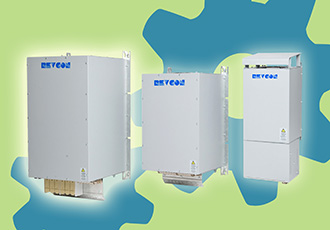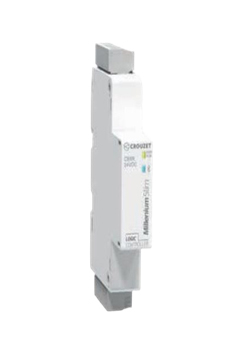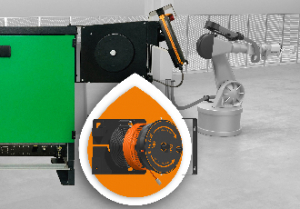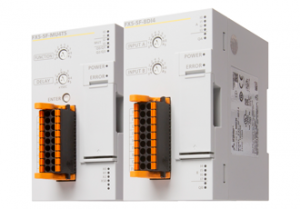Active and passive filtering techniques for harmonic mitigation

The rise of non-linear loads in industrial environments over the last two decades has resulted in the growing problem of harmonic currents and utility-level voltage distortion. Facing a lack of awareness, the industry has struggled to implement effective mitigation techniques. Here, John Mitchell, business development manager of CP Automation explores active and passive filtering.
When The Beach Boys tell us they're "pickin' up good vibrations" it's fair to say that they probably hadn't heard of the importance of power quality. Ironically given that musical reference, the very issue that the industrial community has increasingly struggled with has always been an essential and positive technique in pop music.
The acoustics created by a guitar amplifier often rely on the distortion of the fundamental frequency, by adding multiple sound waves, or overtones to create a warm, fuzzy sound.
It's a different story in industry, where voltage distortion, caused by current harmonics can wreak havoc on the plant, its equipment and the mains power supply. Damage can be serious and varied with the most common symptoms including voltage notching, motor vibration, arcing on bearings, nuisance tripping, electromagnetic interference (EMI/RFI) and overheating.
The thermal stress on components can cause them to wear out quicker and inefficiency through heat loss results in increased energy costs in the long term.
So why is this now becoming such a cause for concern? The last few decades have seen a rise in the use of non linear loads such as transistor based variable speed drives (VSDs) and line commutated DC drive systems.
The processes of high frequency switching and pulse width modulation (PWM), introduce unwanted multiples of the fundamental 50hz frequency in the form of harmonics.
Industry challenges
Various approaches have been used to combat harmonics over the years. This has led to many suppliers using setups which are not meant for harmonic mitigation, in configurations that are often unnecessarily complex, outdated, take up lots of space or are inefficient, ultimately raising costs.
There is the added issue of meeting international harmonic control requirements such as IEEE-519 which limits "the maximum frequency voltage harmonic to 3% of the fundamental and the voltage total harmonic distortion (THD) to 5% for systems with a major parallel resonance at one of the injected frequencies." Some form of filtering is subsequently recommended.
We're lucky in the UK to have a stiff grid, but this is not true everywhere. Developing countries often suffer from weak grids, with an unreliable supply and inadequate infrastructure. The power ratings on products are often based on calculations performed in ideal conditions.
Buyers would be wise to note that these products may perform adversely in weak grids and may not perform to IEEE 519 standards in these conditions.
Active vs passive
Passive and active solutions can be installed in both series and parallel (shunt) configurations. Series solutions operate in line with the load, meaning that units must be sized for the full current load.
Shunt units can be sized only for the harmonic disturbance. There is a clear decision to be made between series-passive, shunt-passive, series-active and shunt-active solutions.
Series-passive
The most straight forward series-passive solution can be achieved using a line reactor. This is a three-phase choke placed in front of the rectifier. A line reactor provides a low cost way to reduce current harmonics, whilst adding a level of protection to the rectifier.
However it's not perfect, it's not suitable for large drives and on its own, will be unable to meet IEEE519 standards.
The next option is to use a series harmonic filter. It provides more effective compensation than a line choke, significantly reducing total harmonic distortion (THD). Although a series harmonic filter works well as a "catch-all" it is grid sensitive and may lead to interaction.
It's also bulky and not particularly suited to dynamic applications, working best on pumps and fans on a reasonably well balanced supply.
Of course, truly balanced supplies are few and far between. Any unbalance on the supply can cause damage as a result of overloading and overheating. Series harmonic filters lack upgradeability, monitoring and redundancy, meaning that if the filter fails, the drive fails.
The last series-passive solution is multi-pulse. Multi-pulse is a multi-winding transformer with phase shift in the windings. Because every secondary winding has its own rectifier, an 18-pulse configuration can target and effectively cancel out the 18th, 19th, 35th and 37th harmonics.
The downside of using multi-pulse is that it's very sensitive to voltage unbalance. On an 18-pulse drive under 50% load, when the unbalance is increased from 0% to 3% the current THD increases from 10% to 35%.
At less than 100% load, the current THD doubles from 8% to 16%. When using multi-pulse, consideration needs to be given to planning the drive system and deployment as units are often large, heavy and difficult to retrofit.
Shunt-passive
Shunt passive is power factor correction, often using fixed capacitor banks, tuned and detuned contactor based units, thyristor capacitor banks and fine tuned passive filters.
These methods were principally developed to resolve reactive power and not specifically for harmonic mitigation. Today, I would hope no one is installing capacitor banks by themselves and, at the very least, using de-tuned ones – with an inductor for example.
An inherent weakness of passive solutions is the inability to control the load. The grid loading, along with the filter's impedance, can cause several fine-tuned shunt filters to interact, resulting in resonance with other equipment.
Similar articles
More from CP Automation
- Quality crane components meet expert technical advice 4th May 2021
- Surge protection considerations during elevator modernisation 11th March 2021
- Recycling refrigerants in the Netherlands 12th February 2021
- Beyond the VSD: Making motors run efficiently 18th January 2021












Write a comment
No comments